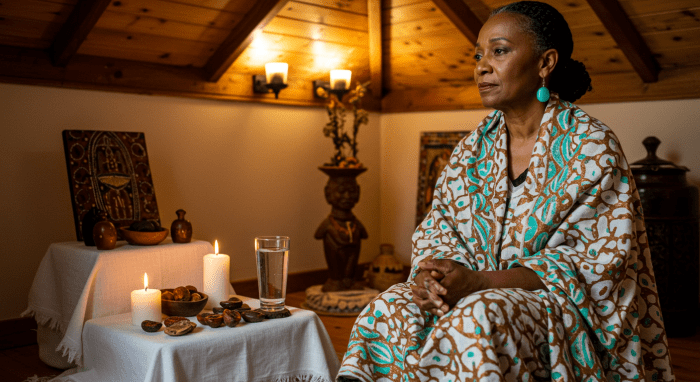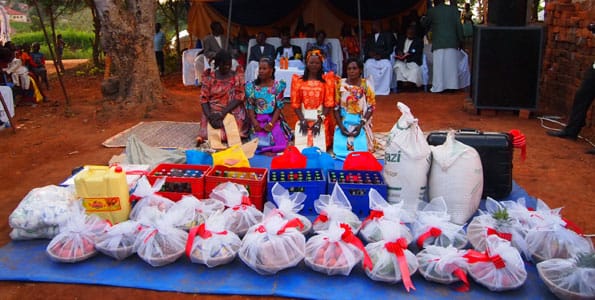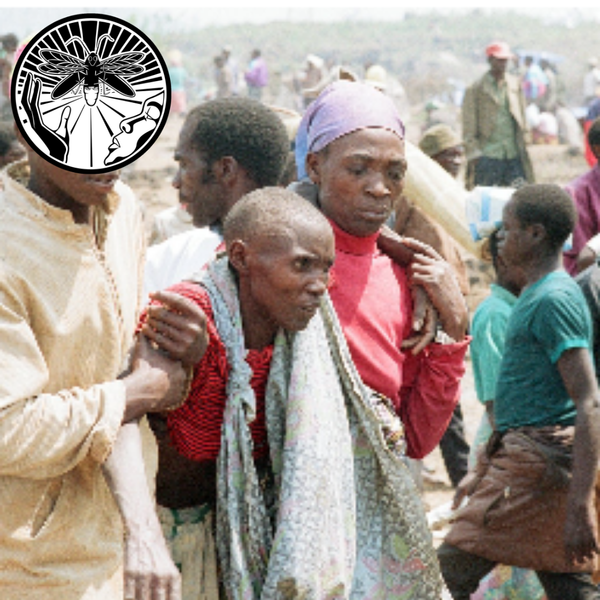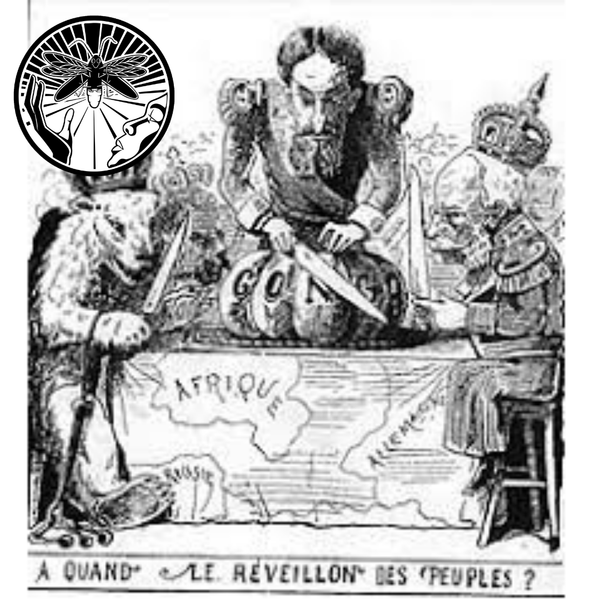Catastrophe in Meritah’s Great Lakes - Part IIII: Betrayal
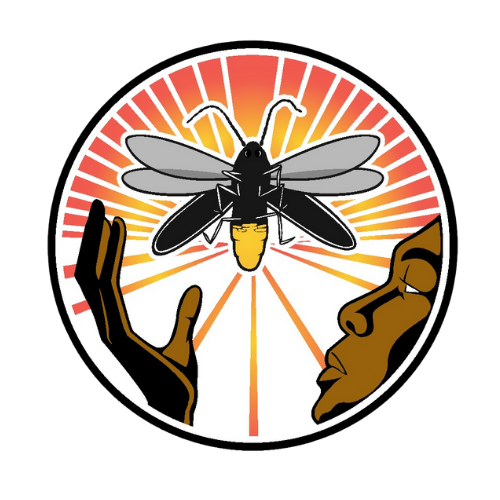

by Kasabez Maakmaah
Against the principles of evil, the individual can only be compared to an orphan to which the assassin of his father is at the same time the one that educated him, fed him, and raised him. One should not be surprised that the orphan sees the assassin of his father as a savior!
Prophet Neb Naba Lamoussa Morodenibig
According to the Kemetic spiritual texts, Heru represents every human being. Heru is the God-child of a God-father, Wsr (Osiris,) and a Goddess-mother, Aishat. The three of them are known as the Second Trinity. Heru is born disadvantaged because Wsr has been killed by Seth, Wsr’s brother. Although Heru has the mission of fighting Seth and reclaiming his father’s throne, Seth has prepared his plot to turn Heru against his own father.
And so the story goes… It has been a long time that the Heru (male) and Herut (female) of today have been disconnected from our father, since we have ceased to look to Wsr for guidance and inspiration, since we have ceased to look to Kemet for our model… Let us understand clearly that our problems up until today begin here.
This is a story of conspiracies that has played out in the most vicious and diabolical way and yet it has escaped humanity’s attention. If you have any concern for the dangerous direction humanity is now headed, this is a story you must hear. Before Egypt was defined as the northeast corner of the continent of Meritah (Africa), Kemet (commonly equated with Egypt) included the entire continent of Meritah in addition to vast territories of Asia, Australia and Maanu (the Americas). Humanity, united under the majesty of Kemet and the Pharaohs, was inspired by the Second Trinity.
If we are looking for Kemetic Civilization, we must not overlook the source of the Nile River along which Itoure, the Valley of Kings, was built. This source of the Nile is in the same region where humanity is said to have originated. This is the same Great Lakes of Meritah, the Heart of Meritah, the birthplace of humanity. Could it be…?
In the 1800s, while the European world was busy maligning the image of Meritah, calling it a land of savages that needed to be tamed, this same society had an obsession with Itoure. The name of Sudan, which the Nile River also flows through, comes from the Medu (Hieroglyphic) word “Suten'' meaning King. The previous name for the West African country, Mali, was French Sudan. This period saw the pillaging of the Nile Valley on a massive scale as monuments were stolen and taken to European and American museums, used to build Arab mosques, etc. Early in this same century, Napoleon led his army to loot Itoure and had his army shoot off the nose of the sphinx. In fact, many Kemetic statues that you will find have their noses broken off. This was to hide the features on these statues that are generally considered Black, Negroid, Bantu, etc. How else can one revere the genius of goods stolen from others while simultaneously calling them savage?
While all of this is happening, European explorers were obsessed with finding the source of the Nile. The popular lie at the time was that Egypt was not part of Africa, and that the people in the north of Meritah were a separate race of people. This race of people was supposedly descended from Ham, the son of the mythical figure Noah. This “Hamitic '' race was labeled genetically superior, more intelligent and clever than the “sub-Saharan African” known as the “Bantu”. The explorers, particularly John Hanning Speke, were surprised to see people they considered to be Hamites in the Great Lakes region. They explained that this must have been due to some Hamitic conquest of the region and that these Hamites became so comfortable in the area that they completely integrated with the Bantu into the same clans and bloodlines, that they forgot their original language and began speaking the Bantu languages of the region. Although there is no historical evidence of this ever happening, this remains the official story until today. While this may sound crazy, considering there is no historical evidence of Noah or Ham either, none of this should be surprising.
Let us continue our story. In part one of this series, we learned the horrors of this catastrophe in Meritah’s Great Lakes region, also known as the interlacustrine region, from 1994 until present (2015). We now know that this catastrophe cannot be summarized simply as an ethnic conflict between African tribes as we tend to hear. As shown in part two of this series, Hutu and Tutsi, which continue to be the target of blame for the conflict, carried different meanings prior to European invasion. As we have seen in part three, the invaders had conspired to conquer the continent, a plot which has been unfolding for over 2,000 years. The tribes of Meritah whom these various invaders contacted saw them initially as guests and allies. By the time their intentions became clear, it was perhaps too late for them to resist the influence and manipulation of the invaders. By the end of World War I in 1918, Meritah had been devastated by colonialism. It must be clarified that, in such a huge continent, there are many peoples who continue to thrive in upholding their traditional social structures. However, we can see that the invaders have succeeded in dominating huge territories throughout Meritah. In order for these invaders, (whose numbers are small in comparison to the population of the continent they had come to parasite) to succeed, they needed to have these populations fight each other.
Colonial infiltration
The Europeans expanded their influence through intrigue. The Meritahwi (people of Meritah) were unaware that the foreign colonists already considered themselves legitimate owners of Meritah where their Ancestors and Gods inhabited. The colonists strategically positioned themselves as allies to whichever king or chief took their offer for assistance in fighting their rivals. They supplied weapons and other goods to the local royalty in return for land and rights to build missions, schools, military bases, roads, railroads and other infrastructure that would be needed for them to take control of the region. While the leaders of European nations were meeting privately to discuss the fate of the “dark continent,” their agents would present themselves as rivals. Catholic vs. Protestant, German vs. Belgian, etc. All of these factions opposed the Muslim presence in the region but ultimately the Meritahwi were the losers in every case as they were always the ones fighting and dying for their new friends’ politics, all while being drawn away from their traditional values and culture.
Through the exploitation of traditional knowledge, notably gunpowder, European countries had been able to create incredibly destructive weapons (See Rising Firefly vol. 69: Earth Talk). These innovations, often seen as proof of superior European intelligence, only prove the extent to which the European elite has been focused on war and their lack of respect for life. However, use of these weapons was just one strategy in their conquest. In the mid 1800s, the British Protestants and French Catholics began establishing missions in the kingdom of Buganda (part of present day Uganda). As they had done successfully throughout Europe for centuries, these churches created rival factions leading the Baganda (people of Buganda) to fight each other. The British faction would gain the support of the king of Buganda. The Catholics would have to flee for their lives. German colonists would later recruit these Catholic Meritahwi to help build their missions in the region.
The Christians also presented themselves as coming to liberate the Meritahwi from enslavement from Arab slave raiders. This is the same church which had introduced the slave trade to the west coasts of Meritah 400 years prior. The church’s policy of conveniently changing its policy and message would again play a pivotal role in the Great Lakes, as we will see.
The relationship between the Christians and the local people is different from what one may imagine. Far from being simple pulpits for evangelisation, Christian missions were armed groups and were centers of power that exerted influence over their surrounding areas. People often joined the church, not because they thought Christianity was superior to Kemetic spirituality, but because they thought they could use it to acquire the goods, weapons and support these missions provided. Missionaries of this period took advantage of this and involved themselves in regional politics to gain alliances of the local royalty. Their strategy was to convert the kings or other important royalty who would then allow the missionaries to teach their children and other members of their court. Often the first generations of converts were not really converts but opportunists. The missionaries understood the children would be their most loyal followers. Like Seth, they would lead these children to betray their own Ancestors.
A catechist is a member of the clergy who teaches the Christian doctrine. This doctrine is called catechism. The converts in training are called catechumen. The catechists had the responsibility of indoctrinating the population and separating them from their traditions. By the time the Germans became active in the Great Lakes region, the missions in Buganda and elsewhere had already produced a second generation of converts who were ready to fight and die for this foreign doctrine.
The Germans employed the typical divide and conquer techniques, supporting certain kings against their neighbors. There were two large kingdoms at the far corner of their territory that we will now focus on: Rwanda and Burundi. In Rwanda, Mwami (king) Rwabugiri had greatly expanded his kingdom. After ruling for over 40 years, the mwami died in 1895. The new mwami would be killed by a rival clan and replaced by Yuhi Musinga. In 1897, as the kingdom entered a civil war, the Germans would establish diplomatic ties with the new mwami and help him consolidate his power. In the following years, Catholic Baganda converts visited Musinga’s court, followed by the French vicar in 1900 who secured land to build the first Catholic mission in Rwanda which was followed by several others.
The kingdom of Burundi bordered Rwanda to the south. Mwami Mwesi Gisabo refused all contact from the whites. The small kings under his authority didn’t accept even a single piece of European clothing in their court. The Germans would resort to violence, earning one lieutenant the nickname digi digi, an imitation of the sound of machine gun fire. Burundi would resist the German terrorism from 1896 to 1903. It wasn’t until the Germans succeeded in recruiting two leaders in the region to support them in fighting the mwami that he was forced to negotiate with the Germans. The Germans then betrayed the rebels who had supported them. The establishment of Catholic missions would follow.
After the World War I, Germany was stripped of its colonies which were redistributed as the spoils of war amongst the allied countries. The kingdoms of Rwanda and Burundi, which were part of German East Africa, would become a “protectorate” of Belgium now called Ruanda-Urundi. This meant that the Belgians had the responsibility to force European “civilisation” on the population. The Belgians continued to administer their new colony through the mwamis in what was called “indirect rule”, instead of replacing them with a Belgian governor.
Pierre Ryckmans, a Belgian administrator in Burundi explained:
The agreement between the native king and the European authorities will lead … to this final result whereby the country will be left only with chiefs willing, or resigned, to march toward progress - and thus acceptable to the occupying power - all while maintaining legitimacy and thus being acceptable to the natives. [The native kings] are the familiar decor that permits us to act behind the scenes without alarming the people.
One of colonialism’s main functions was to enlist its victims into extracting and producing commodities to be used for trade. Through this trade, the colonial powers would further consolidate their gains. During the colonial period, the primary commodity produced in Ruanda-Urundi was coffee. From 1931 to 1938, millions of coffee trees were planted each year. There were several methods by which the people were forced to grow coffee. The colonists had imposed taxes on the population. Every man was required to pay a certain amount. Since it was the Belgians who produced the money, the Meritahwi could only earn it by producing coffee. Failure to pay taxes resulted in whippings. Other methods of coercion and intimidation used by the chiefs were “deemed acceptable to the occupying power”.
Catechism
Religion also played its role. One missionary went so far as to say, “You must preach coffee everywhere, even and especially in the pulpit … Far less useful things are certainly said there”. The irony of this statement is a shocking example of the function of Christianity. The Christian missions, strategically built on the tops of high hills chosen for their dominance over the landscape, became increasingly forceful in their conversions. In Burundi, the number of baptisms rose from around 7,000 in 1916 to almost 2 million (about two-thirds of the population) by 1970 Religious journals referred to this phenomenon as the “Holy Spirit’s tornado”. Like a natural disaster, Christianity spread leaving destruction in its wake.
In 1933, two-thirds of Burundian chiefs and half of the sub chiefs had been baptized. By 1934, 90% of the Rwandan chiefs had converted. Major traditional festivals would be discontinued and replaced with Christmas. Chiefs began to enforce the conversion of their people. One convert from this period retold his experience:
[Your patron] told you that at such and such a place there was a catechist, “If you do not start learning catechism, I will take everything from you, destroy your house, and chase you from the hill!”
In 1931, Mwami Yuhi Musinga was deposed by Belgium for his opposition to “progress” and the creation of a Christian kingdom in Rwanda. He was replaced by his son Rudahihgwa who took the name Mutara III. He would be baptized in 1942, taking the name Charles Leon Pierre after notable colonial authorities in the region. An elder would later be quoted as saying, “The pope … and our own king, king of the converts and others, reached an agreement. The imandwa [spirits of Ancestral royalty] no longer stood a chance.” In 1946, Rwanda was dedicated to Christ.
While the threat coming from the Christian converts was real, there is also a very real danger that comes with abandoning one’s spiritual traditions. The Ancestral and Divine Worlds are paramount in maintaining the stability of a traditional society. As we now know, the consequences of abandoning them have been cataclysmic.
The Racial Divide
Until today, Hutu and Tutsi are considered two distinct ethnicities or races, but according to the definition of ethnicity and race, this cannot be the case. Ethnicity, by textbook definition, means “a social group that shares a common and distinctive culture, religion, language, or the like”. In Ruanda-Urundi, the only place Bahutu (Hutu people) and Batutsi (Tutsi people) are said to come from, the two distinctive kingdoms are Rwanda and Burundi. The two distinct languages are Kinyarwanda (Rwanda) and Kirundi (Burundi). There is no Tutsi language or Hutu culture. Hutu and Tutsi are not ethnicities! A race is defined as “a group of persons related by common descent or heredity.” In this case, the clan and blood lineages that both Hutu and Tutsi share are more appropriate to be identified rather than the races, “Hutu” and “Tutsi”.
Tutsi and Hutu are also referred to as a class distinction: Tutsi the aristocracy and Hutu the commoners, but this definition doesn’t fit either. Many people who would later be called Tutsi were also commoners and many of the traditional chiefs were classified as Hutu.
The difference is also connected to the physical characteristics: height, shape of nose, hair texture, etc. Even with the same father and mother, two people can come out looking very different. How can this be the basis for classifying the entire population? Colonial invaders came and noticed that the Mwamis and many of the royalty had the characteristics of the “Hamitic race”. In traditional societies throughout Meritah, kings usually have to come from certain bloodlines, as in the case with Rwanda and Burundi. Even though some of the royal bloodlines in this region happened to produce more “Hamitic” looking people, this is still not proof of a Tutsi invasion. Even if such an invasion had occurred at some point, by the time the European invaders arrived, the kingdoms of Rwanda and Burundi were not classified in terms of Hutu vs. Tutsi.
Unfortunately, none of this matters now. Even if we don’t understand how one originally came to be known as Hutu or Tutsi, beginning in 1933, the Belgian administration began to require everyone in Ruanda-Urundi to register as either Hutu, Tutsi or Twa. Twa are the group of “pygmies” or “little people” in the region who are an estimated 1% of the population. The Batwa (Twa people) are so marginalized and distant from mainstream society, as with various other groups of “pygmies” throughout Meritah, that it’s hard to find information about them or how colonialism has affected them.
After the classification of the population, whatever original meaning the terms Hutu or Tutsi had were changed as people’s ID cards listed them as one or the other, if not Twa. The classification was mostly done on an arbitrary basis and there is very little information about the means used to classify the millions of people of Ruanda-Urundi. One could be classified as Tutsi because he was part of a royal bloodline, owned more than 10 cows or just because he had a longer nose. What is clear is what Hutu and Tutsi would mean in the aftermath. As it’s said, a lie told many times can become more believable than the truth. That’s why the majority of information available will state that the Tutsi are a herder culture that originated in North or East Africa who invaded and conquered the “Bantu” Bahutu who were primarily farmers. This was also taught in schools, which segregated Hutu and Tutsi in Rwanda beginning in 1928. In the words of one secondary school teacher:
Of the Caucasian race, as well as the Semitic and the Indo-European, the Hamitic people at base have nothing in common with Negroes … Especially in Ruanda-Urundi, the Eastern Hamites showed what they were made of. Physically, these races are superb: despite the inevitable race mixings that are the result of prolonged contact with Negroes, the preponderance of the Caucasian type has remained deeply marked among the Batutsi … Their elevated height … the fineness of their traits, and their intelligent expression all contribute to their being worthy of the title that the explorers gave them: aristocratic Negroes.
Following 1933, there was a deliberate elimination of Bahutu from positions of power. By 1945, no Hutu held even a single sub chief position. This new generation of elites had been educated and approved by their colonizers. It should not be surprising that Rwanda-Urundi gradually resembled a European feudal society where the peasant class had no rights and was at the mercy of the elite class.
During the 1950s, Mwami Mutara had begun social reforms. In 1954, he abolished buhake, the “patronage” contract that is often noted as the basis for the divide between Hutu and Tutsi. Under this system, one would work for a “patron” for a period of time in order to earn cattle. This social contract historically produced loyalty and mutual benefits between “patron” and “client”. However, under Belgian occupation, this contract had more closely resembled feudalism. In 1958, Mutara abolished the obligatory crop system which required the peasant class to farm a certain amount of land. At this time, while independence movements were taking root globally, the Mwami and his high council began to call for independence for Belgium.
In 1950, the Tutsi elite was celebrated by the Catholic Church for bringing their kingdoms toward Christ. By 1959, the Church had completely reversed its position in Rwanda, siding with the peasant class of Bahutu against their Tutsi oppressors. History had been retaught to present the Batutsi as having their feet on the necks of the Bahutu for the past 400 years when the reality was this “racial” divide was invented by the church itself. The church would then reinvent itself as liberators of the peasants they themselves had helped to oppress for the past 50 years. This was ironically happening at a time when the Tutsi Mwami was working to free all Banyarwanda (Rwandans) from colonial rule.
In 1959, Mwami Mutara would die mysteriously after visiting a Belgian doctor for a headache. This would mark a turning point for the Kingdom of Rwanda. His successor would be Kigeri V, another one of Yuhi Musinga’s sons. At that time, a militant, extremist group called PARMEHUTU (Party for the Movement of Emancipation of the Bahutu) would emerge under the leadership of Gregoire Kayibanda and the support of the Belgian Government, Catholic Church and United Nations. Following Mwami Mutara’s death, PARMEHUTU would lead an attack on Batutsi in the north and center of the kingdom, killing hundreds of Tutsi and burning thousands of homes. The north of Rwanda was virtually “purified” of Tutsi. Hutu leaders were assassinated in retaliation.
The Belgian regime then replaced half of the chiefs and 300 of 500 sub chiefs with Hutu puppets and in 1961, PARMEHUTU with Belgian and Christian guidance and support, organized a revolt against the mwami, who fled to the capital of Congo, Leopoldville (now Kinshasa). Having painted the “Tutsi” monarchy as a foreign and oppressive regime, the colonizer succeeded in turning the masses of Banyarwanda against their own royalty. Kayibanda’s election as the first president of the Rwandan republic in 1962, instead of representing the liberation of Rwanda from its colonizer, liberated it from its origins. This was a decisive victory for Seth against this ancient empire. Heru, instead of fighting to protect his father’s kingdom, has destroyed it.

